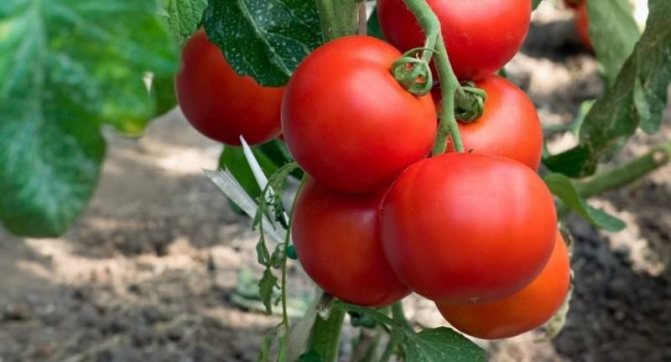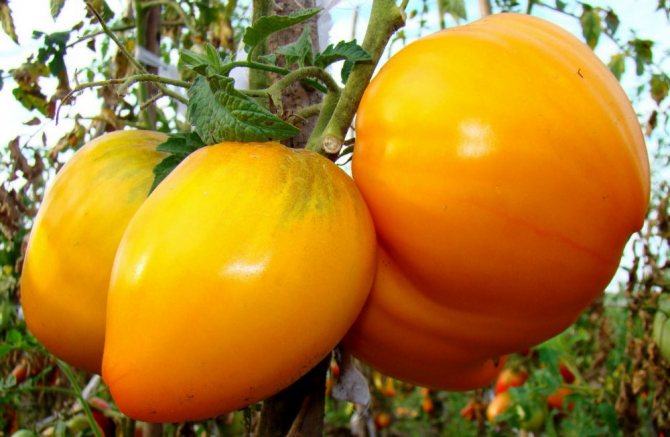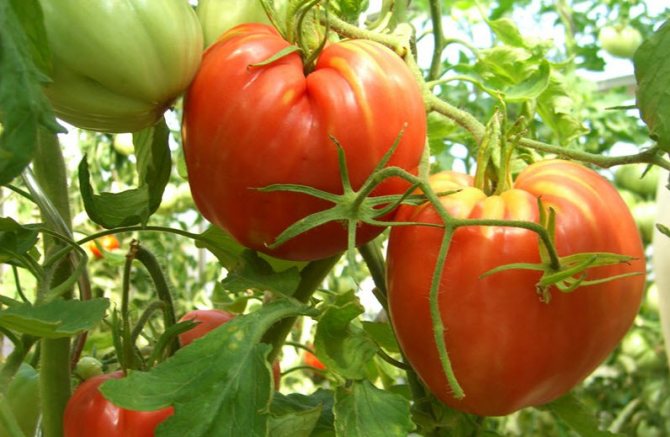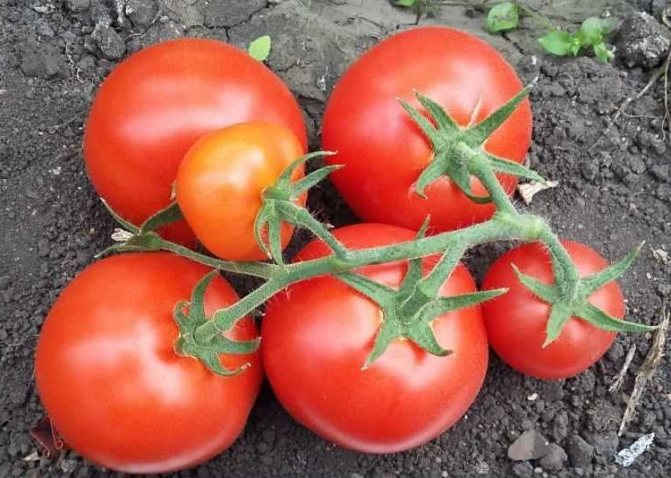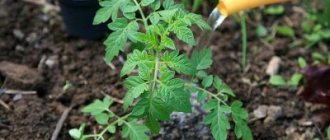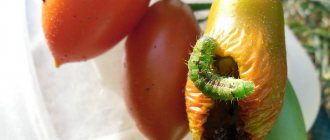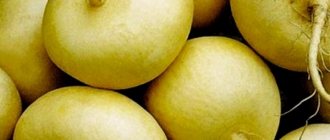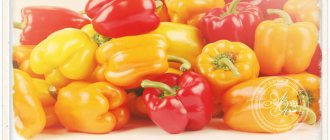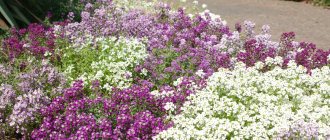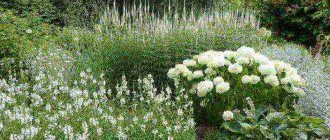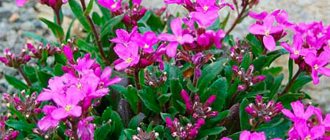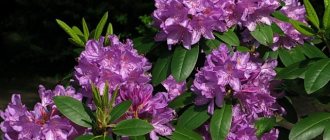Author rating
The author of the article
Yakov Pavlovich
Professor, Head of the Department of Vegetable Growing
Articles written
153
Late blight, caused by the microorganism late blight, is rightfully considered the most harmful fungal disease of tomatoes in the gardens of the Moscow region. The infection damages foliage and fruits, causing them to darken and rot. Yield losses can reach 80-100%. The pathogen spreads both in greenhouses and on street ridges. It is most active at high humidity, in the temperature range from +20 to +25.

Fighting the disease with the help of agrotechnical methods and fungicides is not always effective, moreover, it is harmful to the environment and is costly from a financial point of view. The breeders are faced with the task of obtaining varieties that are not susceptible to the influence of the fungus. This problem has not yet been fully resolved.
Gardeners are advised to pay attention to early ripening tomatoes, massively yielding before the spread of infection. There are also varieties and hybrids that show a fairly high tolerance to fungal damage.
Popular varieties for open beds
The causative agent of late blight is a fungus that infects not only tomatoes, but also other vegetable crops of the Solanaceae family.
It is not always possible to detect the first signs of the disease, since the inner part of the leaves is affected, a whitish bloom appears. In a couple of days, the white bloom becomes brown, and the entire plant, including the fruits, becomes covered with dark spots. At first, a dark seal appears on tomatoes, which grows every day, and as a result, the entire fruit darkens, begins to smell unpleasant.
Phytophthora spores live everywhere: in the soil, on the tops of last year's harvest, in garden tools. In dry, clear weather, they are dormant. But as soon as the rainy weather drags on, the harmful activity of the fungus is activated.
What tomatoes can not be afraid of phytophthora? Many years of experience of vegetable growers and specialists will help to get an answer to this question. If we talk about which varieties and hybrids show resistance, then the latter wine. It is the hybrids that are bred by breeders to obtain the best characteristics, including for resistance to brown rot.
Which varieties of tomatoes do not rot can be understood only by growing a crop for several years. Tomato varieties resistant to late blight are recognized by experienced vegetable growers, are unpretentious to weather and care, and are resistant to many other viruses and bacteria.


Openwork F1 will be a real treasure for gardeners. Differs in a bountiful harvest, firmly tolerates not only late blight, but also many other common diseases. It stretches up to 78 cm. Medium early crop - the harvest will be ready for consumption after 100 days. The round-flattened red fruit weighs approximately 250 g.
The F1 doll is a hybrid, therefore it has good characteristics. This is an early variety, fruit ripening occurs after 87 days. The bush is small, about 60 cm. Tying is required, since the fruits are heavy - about 280 g, and the side branches are removed. The color of ripe tomatoes is red-orange.
The Captain F1 hybrid begins to ripen very early, after 80 days.An adult bush does not exceed 70 cm in height. The red fruits have an even, round shape, their weight is 120 g.
The puzzle has compact bushes that are not afraid of fungal and viral infections. The height of the central stem is not more than 50 cm. Fruits ripen on tassels of 5 pieces weighing up to 75 g. They begin to ripen already on the 85th day, turning in a bright red tone.
Mikado grows up to 90 cm high and is characterized by medium boundaries of fruit formation. You can harvest a ripe, red-scarlet crop after 115 days. Pinching is required. The fruits weigh approximately 250 g.


Intuition F1 shows unpretentiousness to weather changes and rarely gets sick with late blight. It can grow up to 190 cm, so it is necessary to tie and cut side branches. The variety is characterized by average ripening boundaries: tomatoes begin to blush after 115 days. Weight reaches 105 g.
Lakomka tomatoes are not affected by late blight. Plant growth does not exceed 62 cm in height. Ripening begins in 82 days. Tomatoes are red-raspberry-colored and have a rounded shape.
Late blight development process
The development of the disease begins with the leaves. Watery spots form on them, which dry out over time and acquire a brown tint. Looking under the seamy side of the sheet, you can see a white bloom - this is a harmful spore.
16 excellent varieties of plums for the Moscow region


Further, the infection spreads to the stems, and then to the tomatoes themselves. The fruit becomes covered with brown spots, which gradually merge, making the tomato completely black and unusable. Most often, the shape of the fruit is deformed, it becomes softer and acquires a sharp, unpleasant odor.
Read also: Saratov ruby - apricot: description of the variety, characteristics, reviews
Preventive actions
For tomatoes resistant to late blight, it is necessary to organize preventive measures. Any tomatoes, even the most persistent, cannot be completely insured against disease. With a combination of many unfavorable factors, brown rot sometimes takes over.
Preventive measures begin in the fall:
- in October, the old tops must be removed from the garden plot;
- with an excess of lime, sand is added;
- you can not plant tomatoes where vegetables of the nightshade family used to grow;
- it is advisable to water the earth with a solution of potassium permanganate;
- next to tomato beds, you can plant onions, garlic, calendula, dill;
- you can use various solutions from natural ingredients: suitable, for example, garlic, wood ash;
- from purchased funds, Fitosporin, Guapsin are famous for their effectiveness.
See also
Description and characteristics of green tomato varietiesRead
In the greenhouse, additional measures must be taken to protect the plants from fungal infection. Initially, the topsoil must be removed and replaced with a new one. Then the room is ventilated and all materials are disinfected.
Main selection criteria
Today there is a huge variety of tomato varieties. Initially, you should choose the criteria that the suitable varieties must meet. For example, it can be an early harvest, fruits of long storage, regular ripening, a certain size, etc.


Often, for cultivation in a greenhouse, preference is given to varieties of a determinant species. These are plants that have a certain point of growth, undersized. They are very compact, early ripening and yield a good harvest. However, these varieties are not suitable for commercial purposes because they have different fruit sizes.
Flower bed design. TOP 10 simple and effective techniques
Resistant varieties for the greenhouse
The greenhouse is not protected from late blight, but, on the contrary, is more susceptible.Fresh air rarely enters the room, the composition of the soil remains unchanged, in addition, it is not always possible to disinfect the greenhouse structure well.
When growing tomatoes in a greenhouse, you need not only to select suitable tomatoes that are resistant to late blight, but also to ventilate the room well, plant bushes at a great distance, control nitrogenous fertilizers, water as needed, monitor humidity.
The following varieties of tomatoes, resistant to late blight, can be distinguished for greenhouses.
Tomatoes Resonance are suitable for greenhouses. The variety will delight you with ripe fruits already 90 days after planting. The description of the tomato notes that the stem can stretch up to 150 cm. The red-colored round fruits weigh about 310 g. The infection bypasses the culture, and the bush easily tolerates heat and occasional watering.
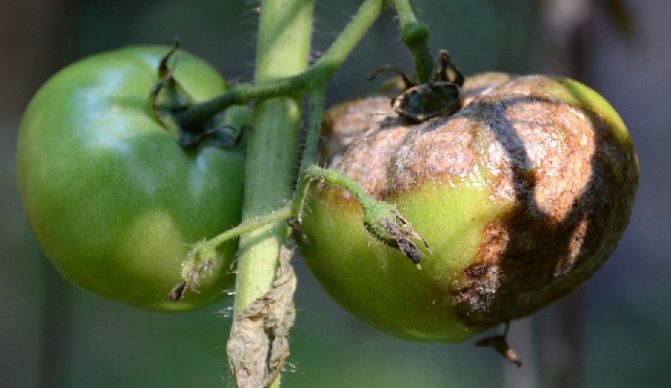

Tomato Dubok is recommended for greenhouse cultivation. Included in the determinant group. The growth of the stem does not exceed 62 cm. Fruits begin to ripen after 2.5 months. Ball-shaped tomatoes are reddish and weigh about 100 g. High yield and ripening at the same time.
Tomato seeds of the Tatiana variety will make it possible to collect fruits from strong bushes in 90 days. The plant is not demanding to care for. Branched stem grows up to 60 cm. Fruits are arranged on clusters of 5 - 6 pieces. Numerous red-scarlet fruits ripen at the same time and will delight you with a sweet taste.
Tomato seeds Orange miracle after germination begin to bear fruit early, and after 85 days you can enjoy the harvest. The fruits look like a flattened ball, their weight can be 380 g. The color of ripe fruits is deep yellow. The meaty variety is rich in vitamin C and carotene.
Not afraid of phytophthora Cardinal - a tall cultivated bush that grows up to two meters. From the moment of sowing the seeds to the formation of fruits, 87 days pass. Fruits in the form of a flattened ball have a red-crimson color, the weight of a tomato can reach 800 g.
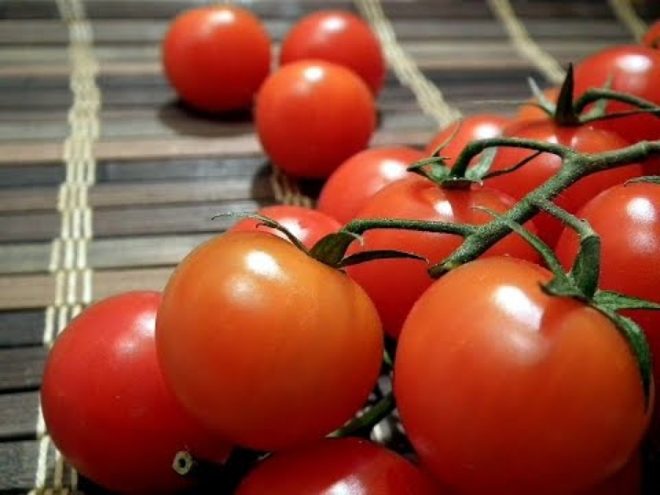

The nobleman is a determinant type of cultivated plant that boasts a large, numerous harvest. The height of the stem reaches 70 cm. Round tomatoes can weigh about 500 g. Care requires pinching the growing point and removing the side branches.
Phyto-resistant varieties are continued by De Barao. Indeterminate variety that stretches up to two meters. Two weeks after transplanting the seedling, you need to tie up the stem. To increase yielding qualities and improve development, the removal of side branches is required. The fruits begin to ripen after 118 days and turn red-burgundy. Weigh about 60g.
The described types of tomatoes love light and warmth. All these varieties of tomatoes that are resistant to late blight can be planted in Ukraine not only in a greenhouse, but also in an open area in the country.
How late blight manifests itself
For many summer residents, late blight is one of the most exciting problems. If this disease is ignored, then the entire crop can die. Late blight has the appearance of brown spots on the fruits and the plants themselves. Its development is facilitated by high humidity, as well as sharp drops in air temperature.
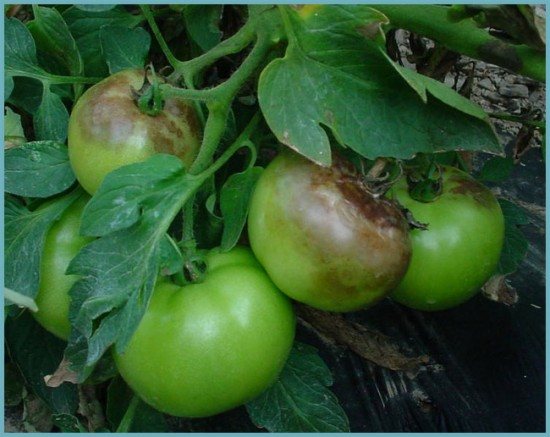

The causative agent of the disease is the fungus Phytophthora infestans, which tends to spread very quickly. Its spores are quite resistant to frost, so not only seeds and plant debris, but also the soil can become infected. It is, of course, possible to process tomato seeds before planting, but it will be extremely problematic to completely remove the entire infection from the soil and greenhouse structure.
Suitable varieties for outdoor cultivation
One of the ways to protect against late blight is to choose early-ripening tomato varieties. Tomato varieties resistant to late blight in the Moscow region, as a rule, are undersized, since all the strength goes into the growth of fruits. The fruits do not exceed 150 g, but the yield is breaking records.
The peculiarity of the climate of the Moscow region is the instability of weather conditions and a high probability of a decrease in air temperature.A tomato variety resistant to late blight for the Moscow region must still be adapted to cold weather.
The late blight-resistant variety Alenka belongs to the determinant group. The variety is suitable for open ground and has a high yield. The bush is undersized, compact, no pinching is required. It is necessary to tie the stem to the support, since under the numerous weight of the fruits, the plant can break.
At the time of full ripening, the fruits are colored in a red tone, their weight is about 100 g.
Among the tomatoes that are not afraid of late blight, the Sanka variety is known. It belongs to ultra-early ripening varieties, since the first fruits can be observed after 82 days. It continues to develop in cold weather and does not suffer from a lack of lighting. The weight of red-orange fruits is about 78 g.
Betta belongs to the determinant group. The stem is low-leafed and grows in height up to 55 cm. Rounded fruits of a red-orange hue have a slightly ribbed surface and weigh only 70 g. The plant is easy to care for - the bushes are resistant to disease and cold.
See also
Description of the tomato variety Pink sugar, features of cultivation and careRead
The characteristic of the Ogni Moskvy variety is distinguished by its early ripening boundaries. At the end of the growing season, it is possible to harvest numerous tomatoes. The compact bush grows no longer in width, but in height, it can reach one meter. Fruits begin to appear after 98 days. Ripe tomatoes are painted in a red-burgundy color, weight - 105 g.
The Explosion tomato variety exhibits incredible weather resistance and is rarely infected with late blight. The red-orange surface of ripe fruits has a slight ribbing. Weighs about 120g.
The blizzard has a strong stem, the height of which is about 55 cm. It has an early ripening period, after about 105 days. Fiery red fruits are formed with a slight ribbing, their weight is about 75 g. The harvested crop is stored for a long time due to the dense skin.
Among the varieties of tomatoes for the Moscow region, resistant to late blight, Alaska is very popular. The variety is determinant, high-yielding, early maturing. The height of the bush is about 60 cm. Rounded-flat scarlet fruits weigh about 75 g. Differs in unpretentiousness to bad weather, does not require much time to care, and is resistant to diseases.
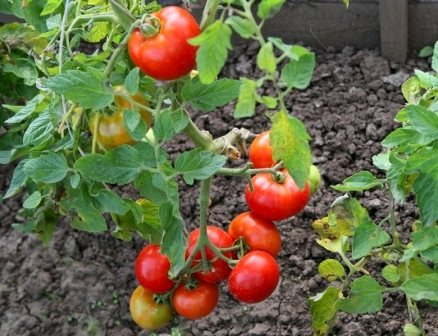

Ladies' fingers do not suffer from late blight. The variety starts to turn red after 102 days. Development continues in cold weather, rains, and the fruits do not crack and are stored for a long time. Oblong fruits with a characteristic spout at the base weigh about 65 g.
How to deal with the disease?
To make the quality of the harvest less dependent on climatic conditions, many gardeners move the beds to equipped greenhouse structures. Such a procedure may be advisable for obtaining an early harvest, as well as the ripening of late varieties, but this will not save the plants from late blight. On the contrary, in greenhouse conditions, this infection develops much faster, especially if the structure is rarely ventilated.
The likelihood of the disease will be much lower if the leaves in contact with the ground are removed in time, not too dense plantings are allowed, watering is carried out strictly under the root of the plant, and the soil is mulched.


Periodic spraying of the seedlings with a solution of confectionery yeast, iodine, needles and soaking the seeds before sowing in a solution of potassium permanganate for 20-30 minutes will help to strengthen the tomatoes. In this matter, special organic preparations containing beneficial bacteria will also help.
Due to the fact that there are tomatoes resistant to late blight, you can only do with the right choice of variety. They are of great interest not only for individual cultivation, but also for use on an industrial scale.
"Gnome", "Perseus" and "Orange Miracle"
The early ripe universal variety "Gnome" does not grow higher than 45 centimeters, bears fruit on day 95. Up to three kilograms of red and round fruits with a weight of 50-60 grams each are harvested from one bush. This variety does not need pinching.
- "Perseus" grows up to 70 centimeters, matures on the 117th day. Its red fruits weigh up to 130 grams. This variety is perfect for long-distance transportation without losing its taste.
- "Orange Miracle" refers to a mid-season variety, from which the fruits are harvested for 85 days. Its peculiarity is orange fruits weighing up to 400 grams. It tolerates both heat and drought very well.



